No matter how odd this may sound, I did go on this journey quite by chance. I actually had very different plans for the end of the year and a much closer destination, but as it happened I was browsing on the internet and then it must have been the fate that led me to the site of a tour operator offering a type of summer holiday on Zanzibar and thus the proverbial light bulb went on.
Generally speaking, I do not like to travel with tour operators and when I do consider such idea it is usually when I go on a summer holiday or some kind of a summer holiday, as was the case this time with Zanzibar.
Be as it may, the trip started early one morning and it was already there at the airport that I met quite a nice lady, Lela, with whom, as it would turn out, I shared the room throughout the journey.
There is no direct flight from Belgrade to Zanzibar, so there was a change of planes, but that’s what it was. It was mostly boring. We landed on Zanzibar in the middle of the night, around 2 am. The arrangement entailed a check-in only in the early afternoon, but luckily it was possible to get a room for little money, so that together with the prior napping on the plane I actually managed to get quite a good rest. So, I did not sleep in the following morning, rather opting even to go for a walk before the group gathered up later on.
First I took photos of what I could see from the end of the hallway at the hotel. I was very content – to start with, there was a palm tree and a banana tree. It was ideal for a summer holiday almost in the middle of winter! The rest only constituted an interesting scenography of a tropical destination in the east of Africa.
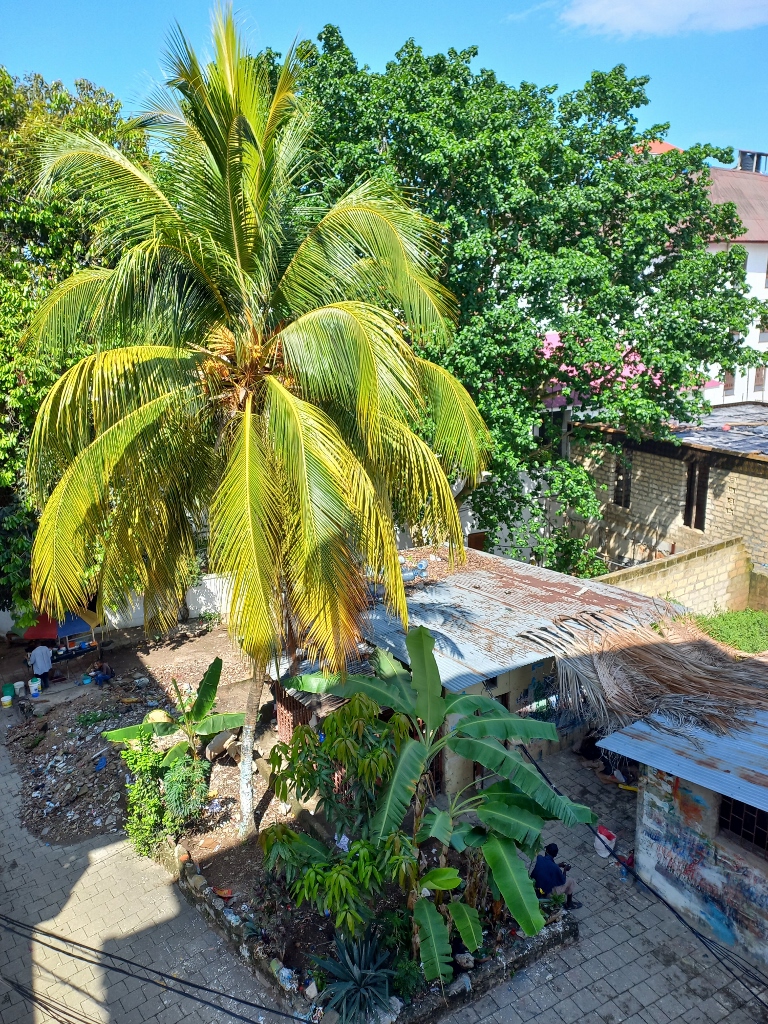 Welcome to Zanzibar
Welcome to Zanzibar
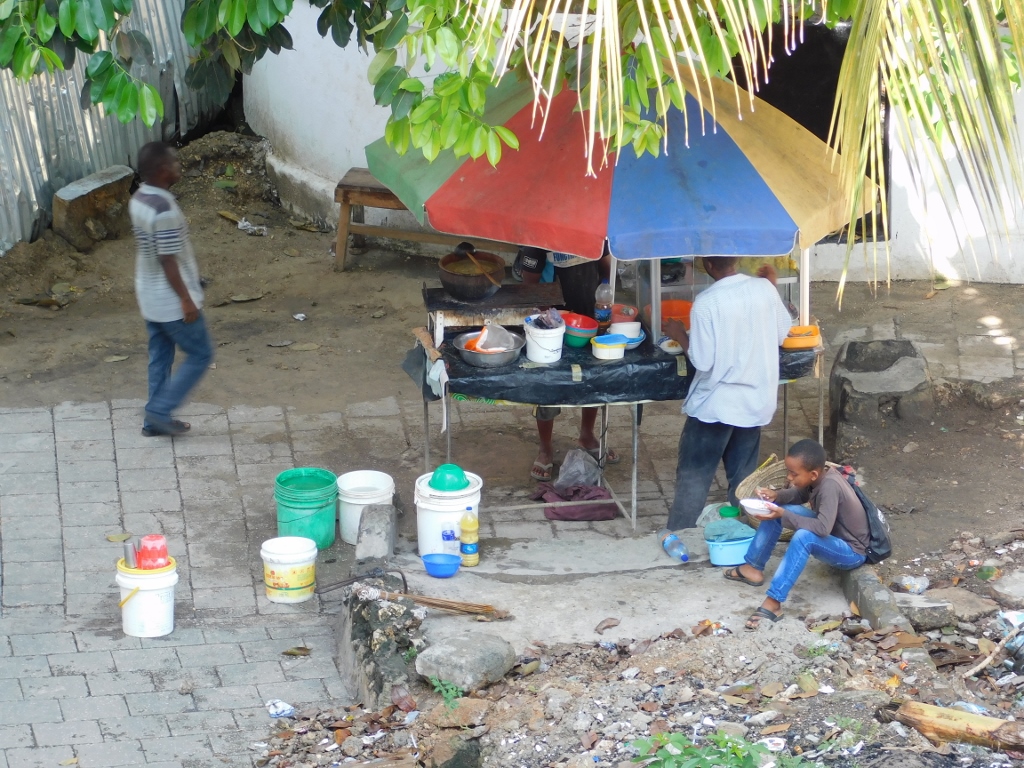 A detail of the street taken from a window at the hotel
A detail of the street taken from a window at the hotel
During the first part of the stay on Zanzibar, we had the accommodation in Stone Town. This is the historic part of Zanzibar City. It is inscribed in the UNESCO’s World Heritage List and I dealt with its historic aspects somewhat later. For the time being, I just went for a stroll in order to get the basic idea about the size and the distribution of the main streets.
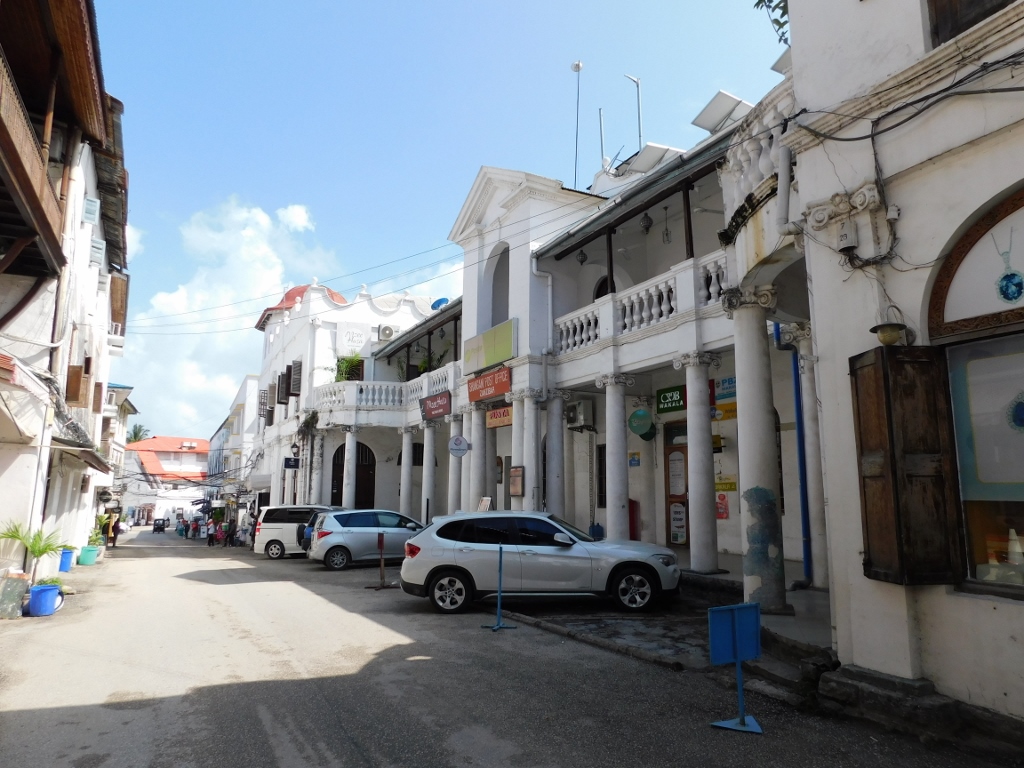 Stone Town, one of the main streets – Kenyatta Road
Stone Town, one of the main streets – Kenyatta Road
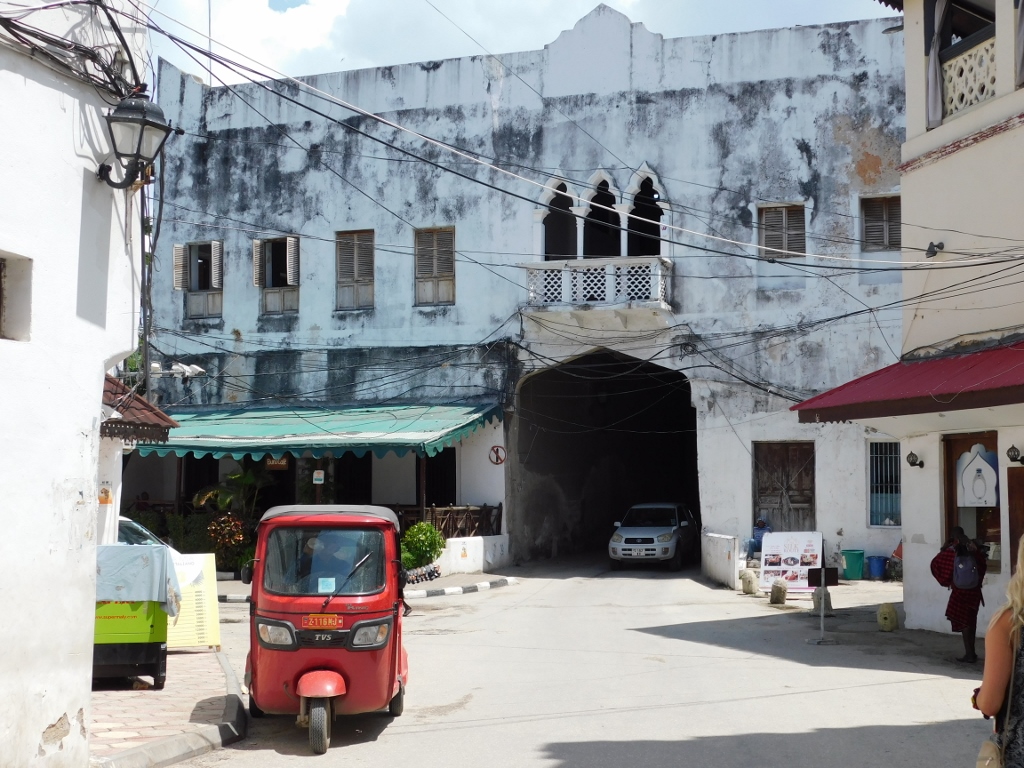 Stone Town, a large house through which leads a tunnel and one of the main streets – Mizingani Road
Stone Town, a large house through which leads a tunnel and one of the main streets – Mizingani Road
And then I got to a beach and the sea on the north side of the town.
 Beach in Stone Town
Beach in Stone Town
Although the beach seemed rather pretty at first sight, I got an impression that this was not the place for swimming. There is a myriad of exceptionally beautiful beaches on Zanzibar, so one should not dash into the water at the first place where this is physically possible.
And so I just turned around and continued with my walk in the direction of the south side of Stone Town.
Before coming to Zanzibar I read that, among other things, Stone Town was renowned for its massive wooden doors that decorated the entrances into the houses. I could see some of them already during this first stroll.
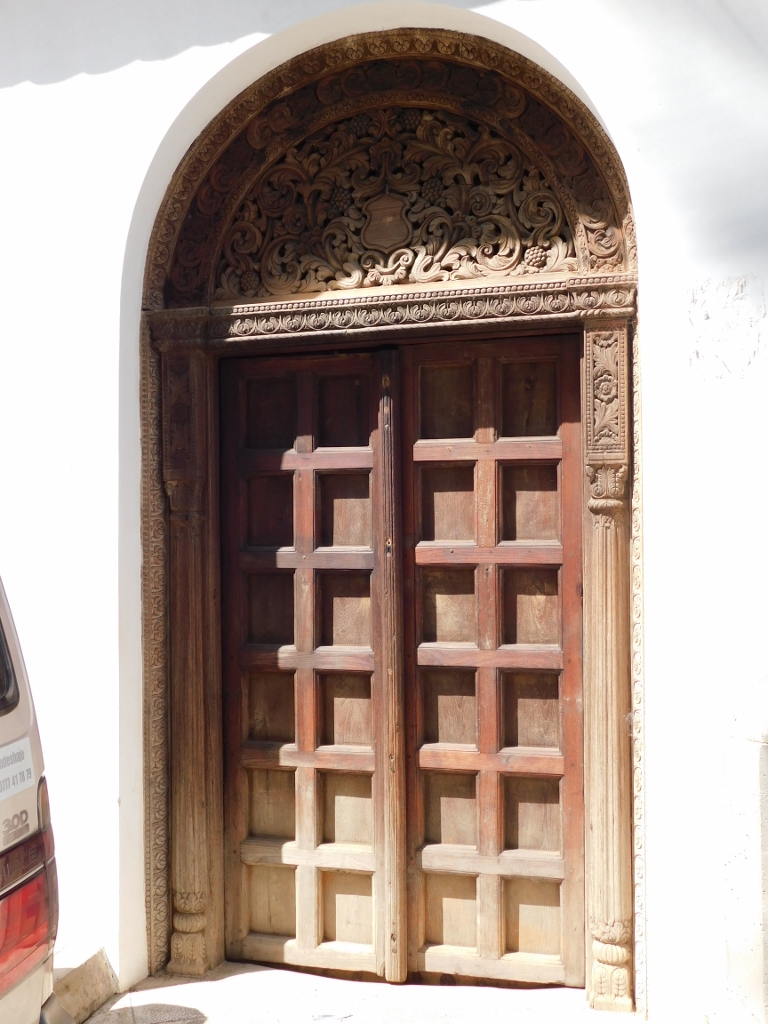 Stone Town, a detail
Stone Town, a detail
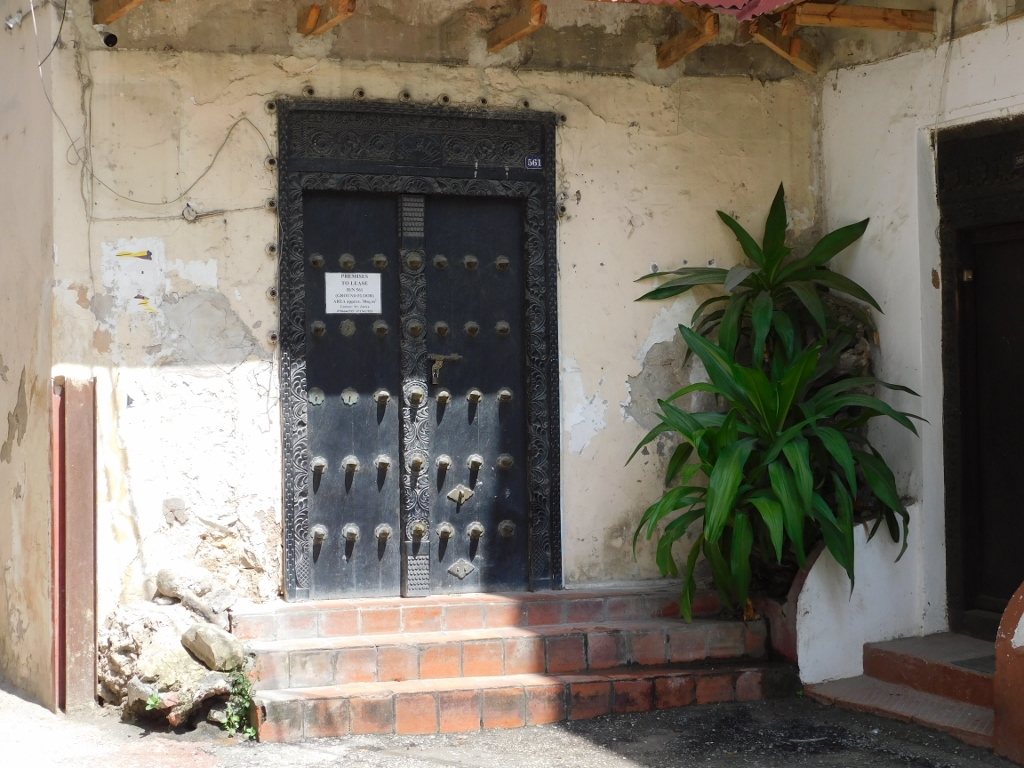 Stone Town, a detail
Stone Town, a detail
I also passed by some interesting houses along the way and then I reached yet another beach, this time on the south side of the town. This was, actually, the same beach that I had seen and taken photos of earlier, however, the beach has a shape of a boomerang thus going around Stone Town from the northwest, via west to the southwest of the town.
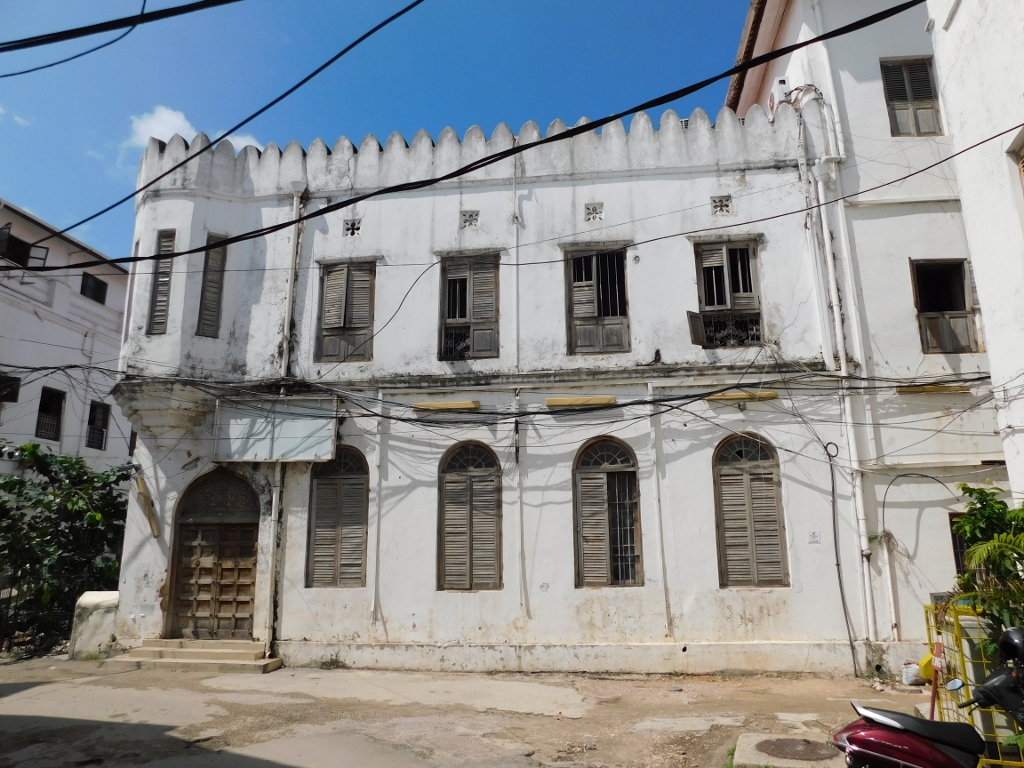 Stone Town, a detail
Stone Town, a detail
 Beach in Stone Town
Beach in Stone Town
Most of the architecture that can be seen in Stone Town dates back to the 19th century and taking into account the strong historic influences of the Arab, Persian, Indian and European settlers, there is a very specific mixture here and it makes the town most interesting for a sightseeing tour.
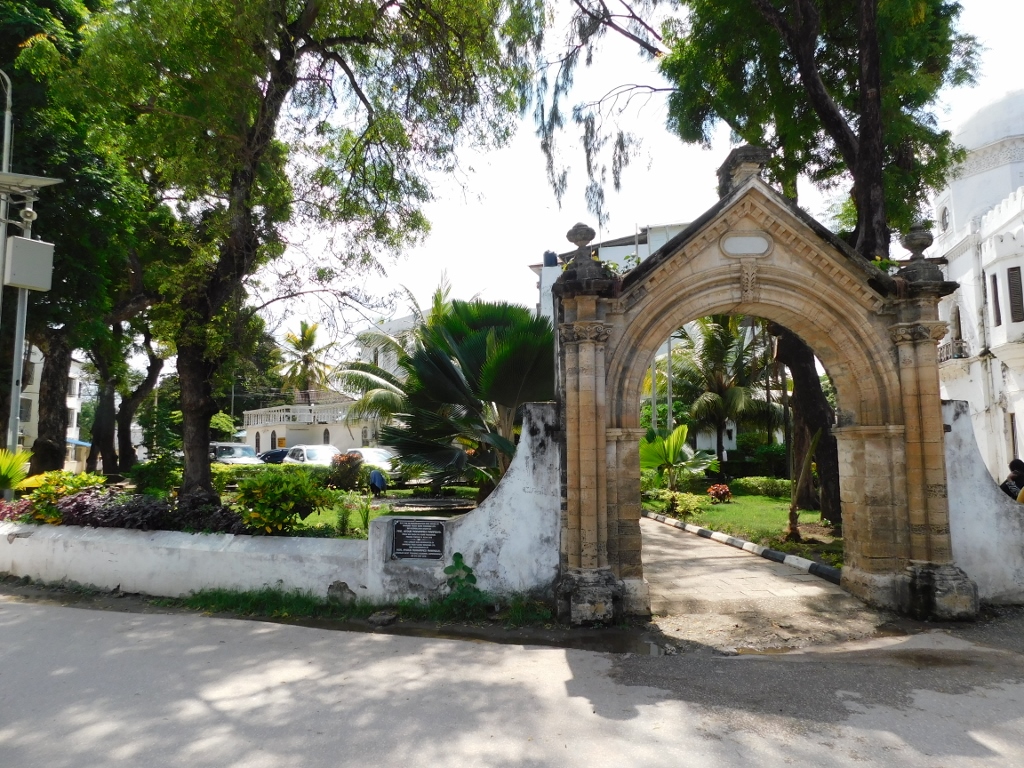 Stone Town, a detail
Stone Town, a detail
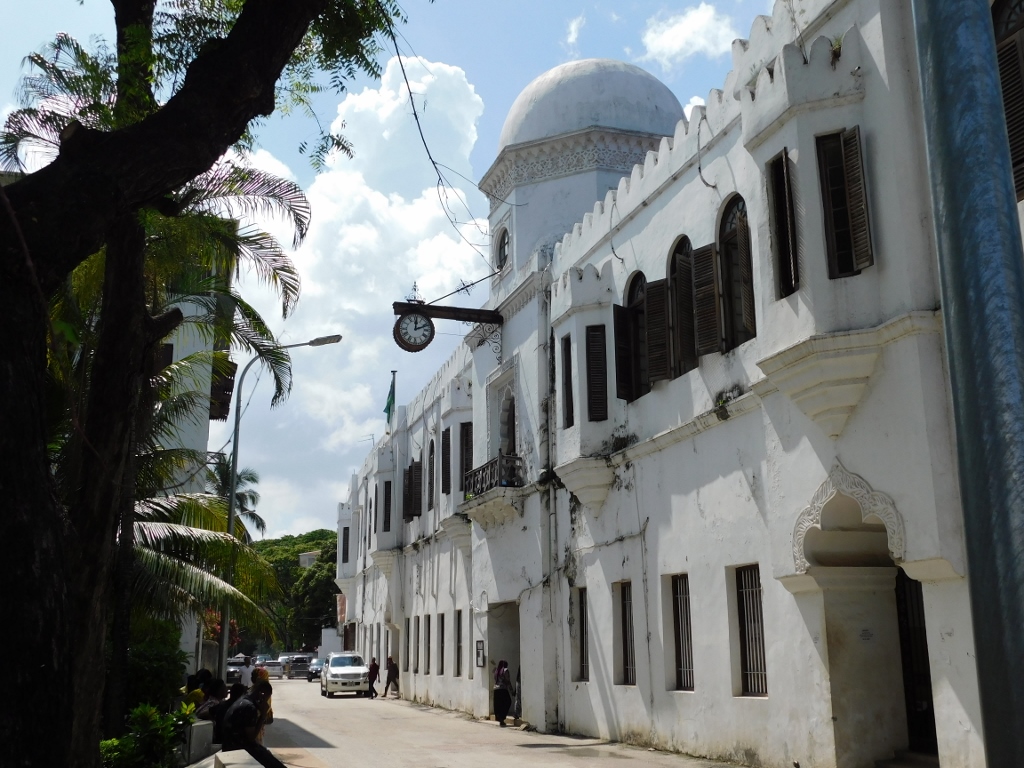 Stone Town, a detail
Stone Town, a detail
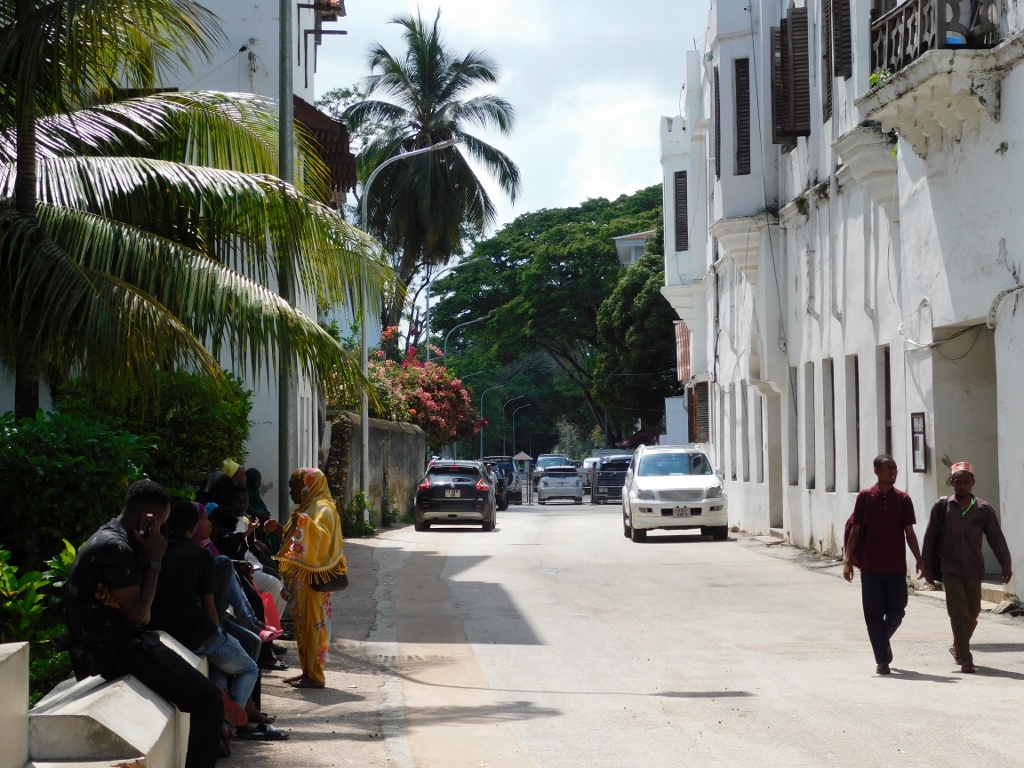 Stone Town, a detail
Stone Town, a detail
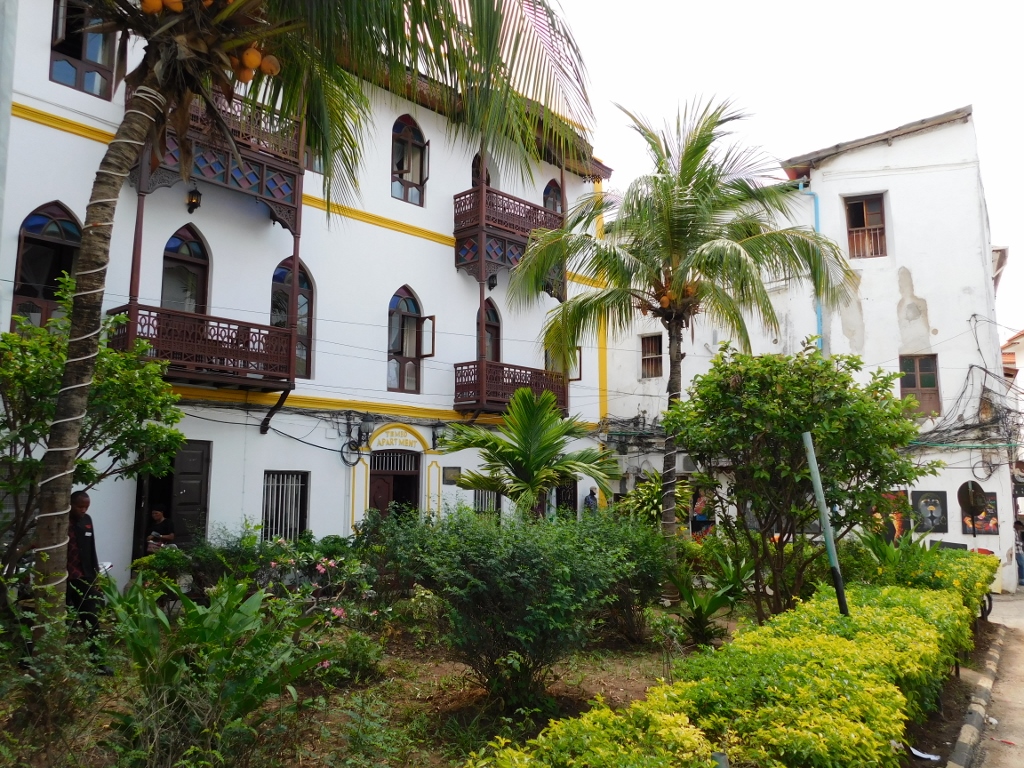 Stone Town, a detail
Stone Town, a detail
After this short stroll of mine, I went to the main post office where the group was to gather up and then all together we went for breakfast and a meeting where we were provided with information about the destination and excursions. It was a very late breakfast, but that did not bother me at all. It was primarily an opportunity for me to sign up for the daily trips I would be going to over the next days.
On the other hand, we were sitting on the balcony of a restaurant that was in the deep shade, while the view at the sea was most pleasant.
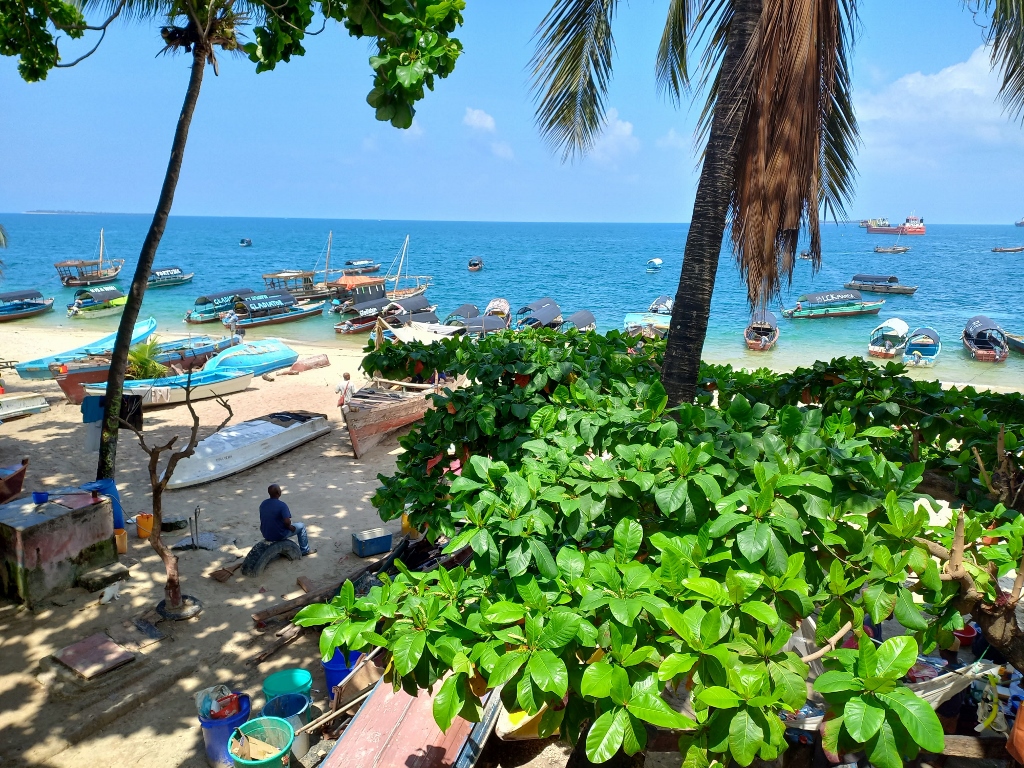 Stone Town, a detail
Stone Town, a detail
When I say “the view at the sea,” this is in fact a mistake. This is the view at the ocean, concretely – the Indian Ocean. The island of Zanzibar is located in the Torrid Zone, around 6 degrees south of the Equator line and close to the east coast of Africa.
Zanzibar is in fact an archipelago and not a single island, which is from 25 to 50 km away from the coast of the continent. The archipelago consists of two bigger and numerous smaller islands. The biggest island is named Unguja, but it is mostly referred to as Zanzibar, while that other island is Pemba and it is around 50 km north of Unguja.
The history of Zanzibar primarily reflects numerous foreign rulers who conquered the territory here and before gaining independence, in 1963, the archipelago was practically ruled by the British. In fact, from the middle of the 19th century to the middle of the 20th century, Zanzibar was officially a sultanate, but it had its sovereignty only from 1856 to 1890. Then the British came and although Zanzibar was never officially a colony (it was formally still ruled by a sultan), it was a British protectorate until 1963. From the legal point of view, Zanzibar actually never gained its independence, for apparently it had never lost it by being a protectorate, but this would then be more of a “potato-potahto” type of case. What is important, however, is the fact that in 1964 Zanzibar joined its significantly bigger dry land neighbour, Tanganyika, that had gained its own independence from the UK in 1961. Upon the unification, Tanganyika and Zanzibar joined their names together into – Tanzania.
The population of Zanzibar is mixed, reflecting the turbulent history, but most of the inhabitants belong to the Swahili people. My impression throughout the stay, from the very beginning until the end, was that the inhabitants of Zanzibar are exceptionally beautiful people. I’ve seen many of them just in passing, but a few were kind enough to pose for me.
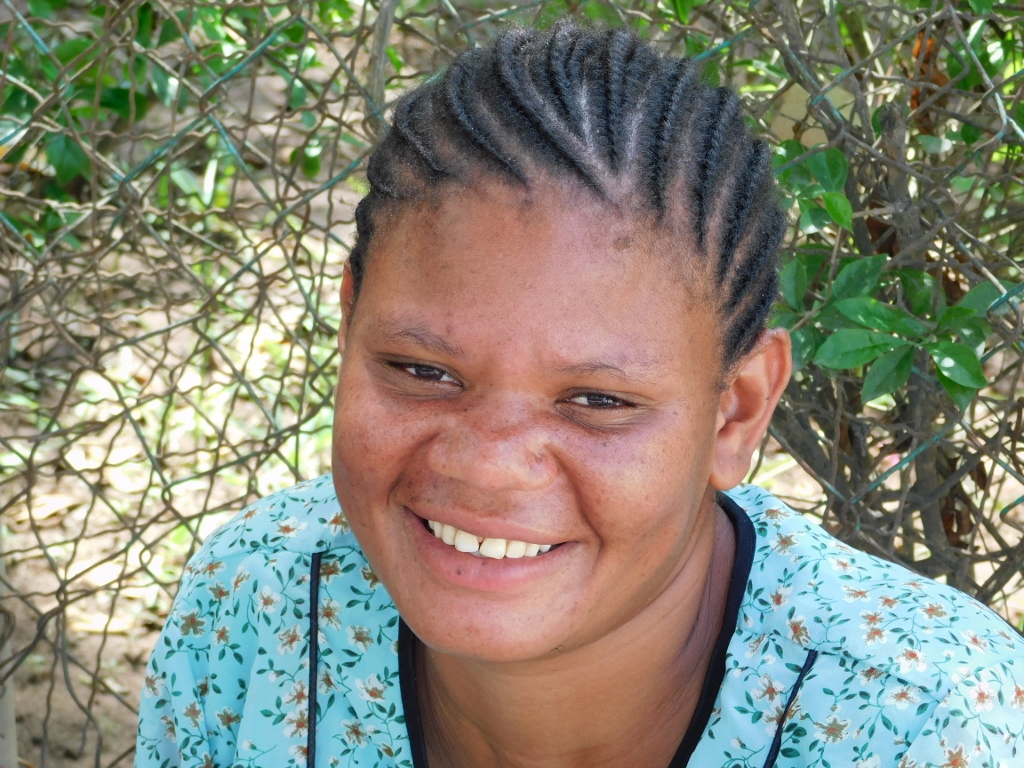 Beautiful inhabitant of Zanzibar
Beautiful inhabitant of Zanzibar
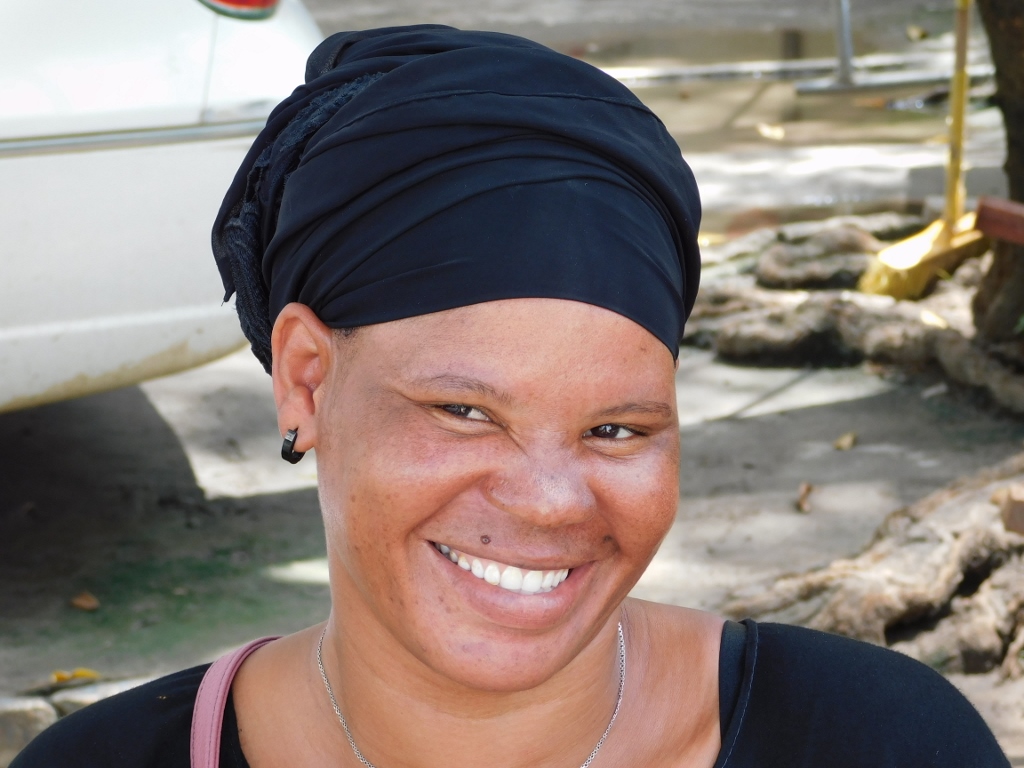 Beautiful inhabitant of Zanzibar
Beautiful inhabitant of Zanzibar
As for the religion, 99% of the inhabitants are Muslims. When I was looking at the higher parts of Stone Town from the roof of my hotel later on, I could see the towers of catholic St. Joseph’s Cathedral, as well as a minaret of a mosque.
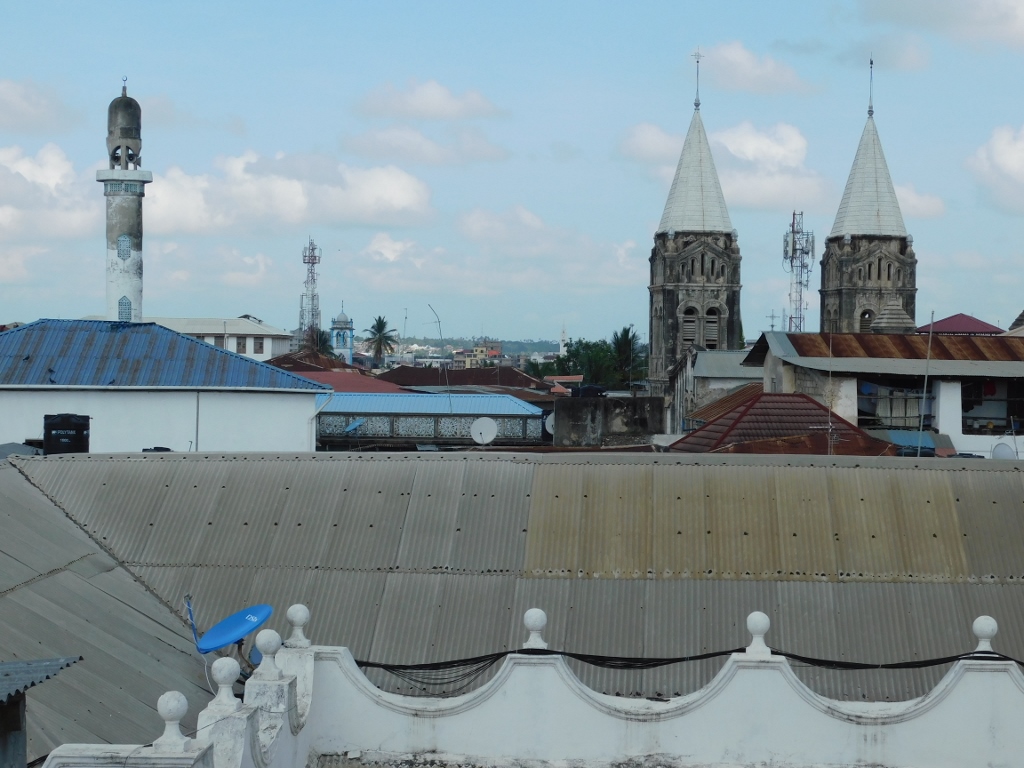 Stone Town, a detail
Stone Town, a detail
Following a brief rest at the hotel, I went with Lela to a smallish, but very specific museum situated in one of the main streets, Kenyatta Road.
During the time of the Zanzibar Sultanate, already towards the end of the 19th century, but before the arrival of the British as the “protectors,” the then sultan organised the arrival and settlement of a certain number of the Parsis from India who had different specialties that were lacking on the island (physicians, lawyers, senior police officers and civil servants). This trend continued to a somewhat higher degree even after Zanzibar had become the British protectorate.
The Parsis are an ethnic community originating in Persia and in the period from the 8th to the 10th century they migrated to India. Their religion is called Zoroastrianism and it is based on the teachings of a Persian philosopher and prophet from the 12th century BCE called Zarathustra (or Zoroaster).The then rulers of India accepted them, but under certain conditions, including also a prohibition of proliferating their beliefs, i.e., the impossibility of converting to their religion. In other words, marriages outside this ethic and religious group are not permitted, while their temples may be entered only by the members. On the other hand, regardless of the lack of mixing through marriages, the Parsis have socialised here quite well with other communities coming from India. There are not many Parsis either in India or in the world and their highest concentration is in Mumbai. And yet, on an average, they are a rather well-off and very educated ethnic group. One of the Parsis renowned throughout the world is the music conductor Zubin Mehta and here in Stone Town there is a museum dedicated to another Parsi famous world over and that is the insurmountable Freddie Mercury of the Queen.
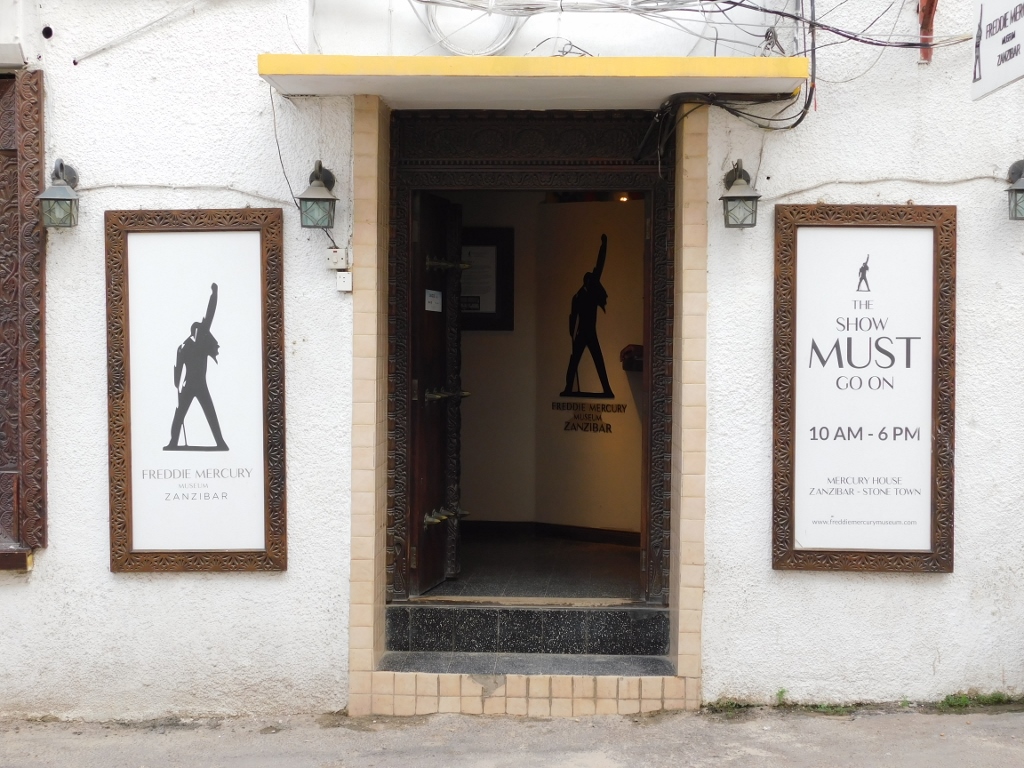 The Freddie Mercury Museum in Stone Town
The Freddie Mercury Museum in Stone Town
Freddie Mercury was born as Farrokh Bulsara right here in Stone Town in 1946. His parents were, in other words, the Parsis who had settled on Zanzibar and they used to live precisely in this house that is the museum nowadays. Farrokh lived on Zanzibar until the age of 8 and then he was sent to a boarding school in India. He came back to Zanzibar when he was 16, but only a year later, Zanzibar gained independence from the British and the Bulsara family moved to England. By the way, this is not me who insists on the erroneous legal interpretation of “independence” vs. “protectorate," but rather most of the documents on the internet, as well as the guidebooks speak like this. Most of the world may have it clear that Zanzibar was not a colony de jure, but de facto they were not independent for as long as the British were around.
As for Freddie Mercury, the very move to England laid the ground for the future group the Queen whose music I love very much. Here at the museum, you can see numerous photographs that show little Farrokh in a pram, for instance, or they illustrate his growing up and education, but there are also photographs from the later, much better known, public phases of his life. It was all quite interesting, but perhaps the best thing was that all the time there was the great music of the Queen and the wonderful voice of Freddie Mercury in the background. The museum had also made sure that they acquired some of the recognisable pieces of wardrobe in which Freddie performed at some of the concerts.
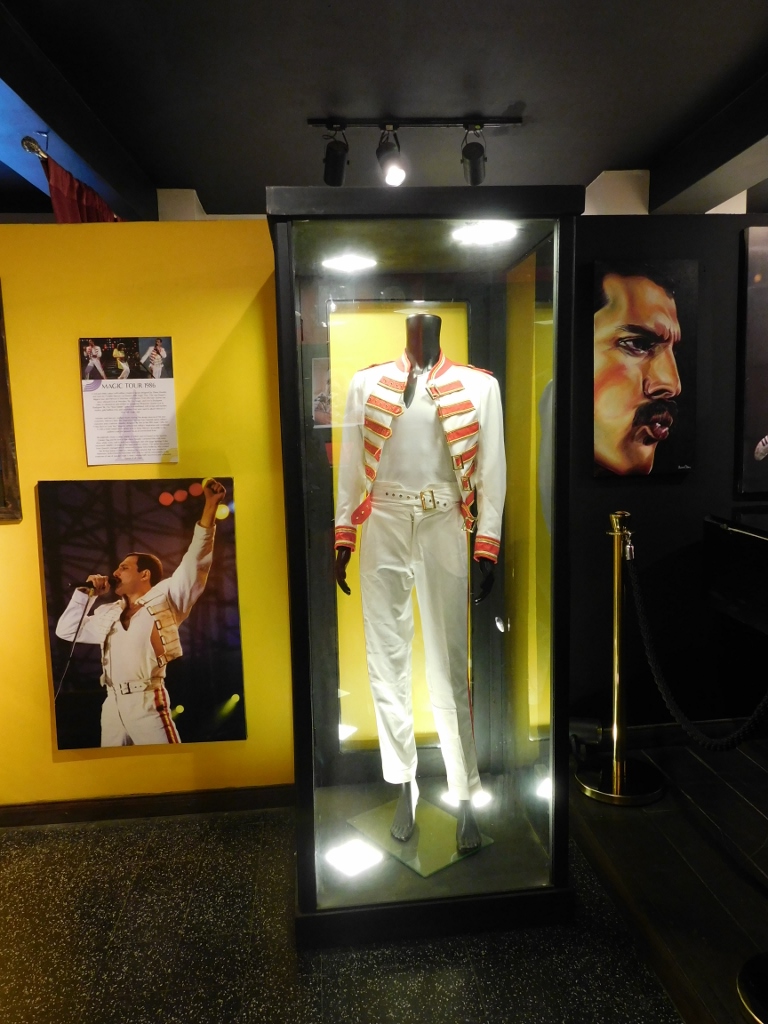 The Freddie Mercury Museum in Stone Town
The Freddie Mercury Museum in Stone Town
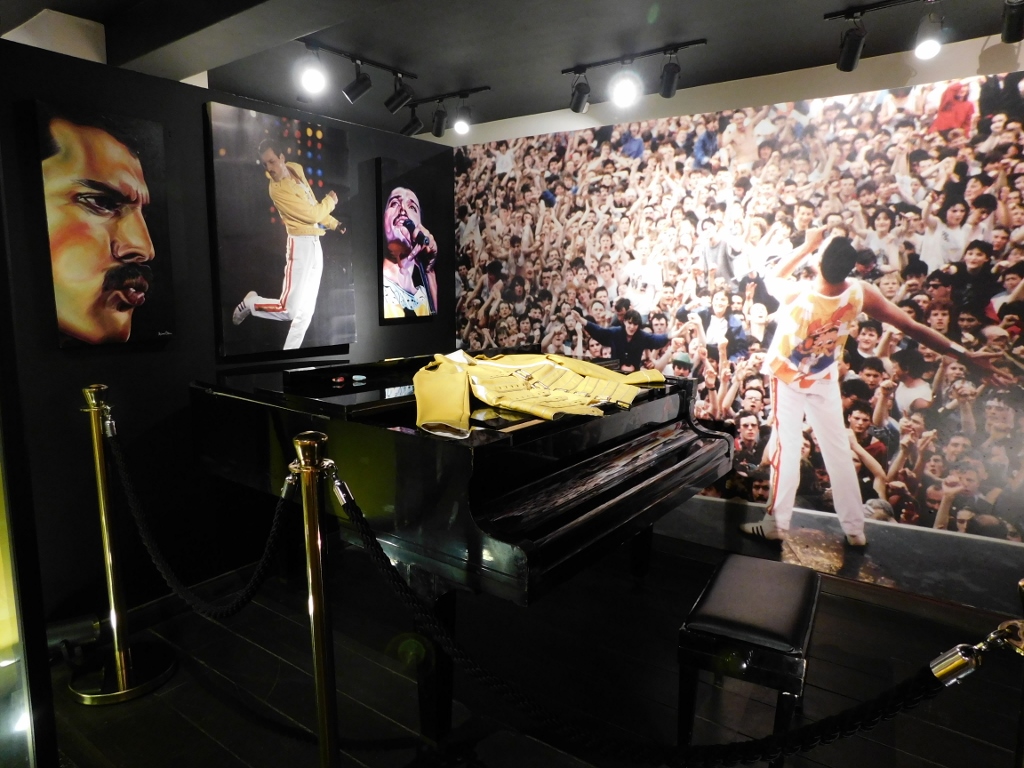 The Freddie Mercury Museum in Stone Town
The Freddie Mercury Museum in Stone Town
After this visit to the smallish museum, Lela and I headed for a café that I had noticed during my morning walk. As it turned out, however, it was the time of the low tide and the smells around the café were not pleasant at all, to say the least.
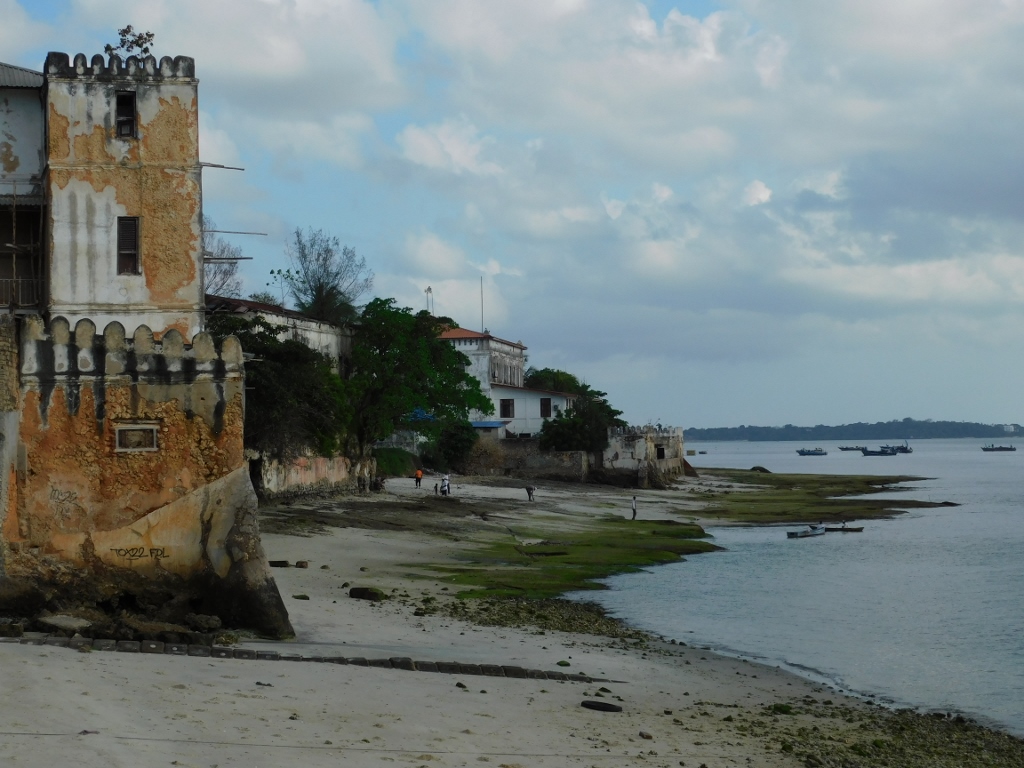 Beach in Stone Town during low tide
Beach in Stone Town during low tide
So, we walked to another place, where we relaxed and enjoyed the splendid view at the Indian Ocean and the setting Sun. This was also the place where we started our friendly relationship with – cocktails.
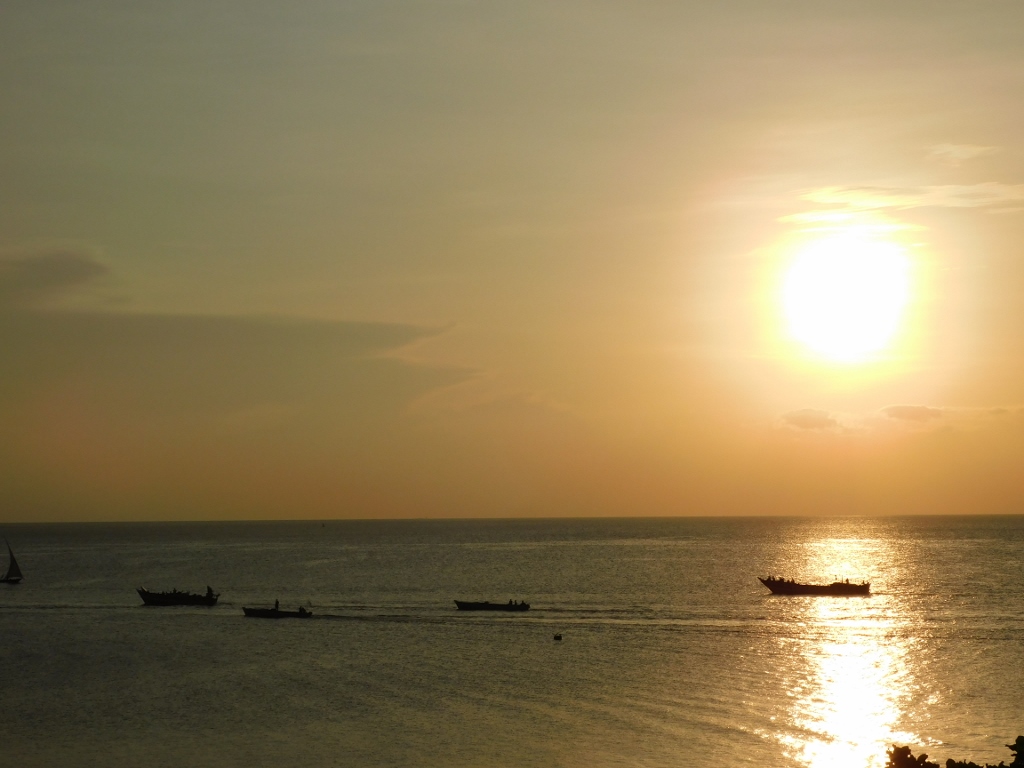 Sunset in Stone Town
Sunset in Stone Town
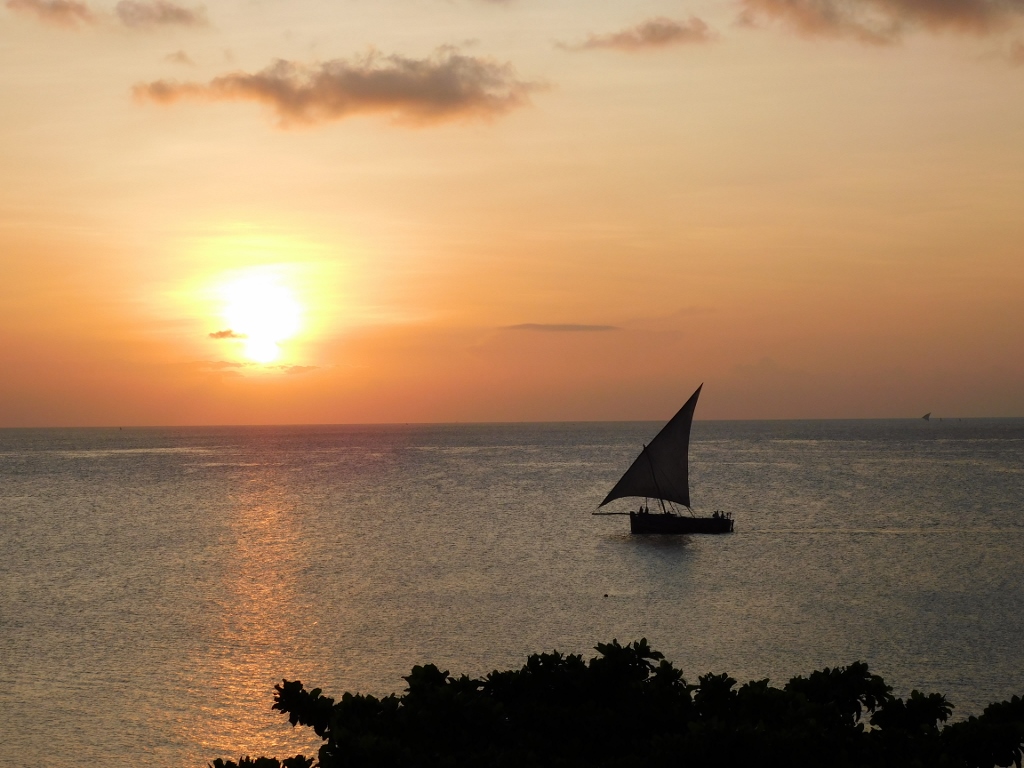 Sunset in Stone Town
Sunset in Stone Town
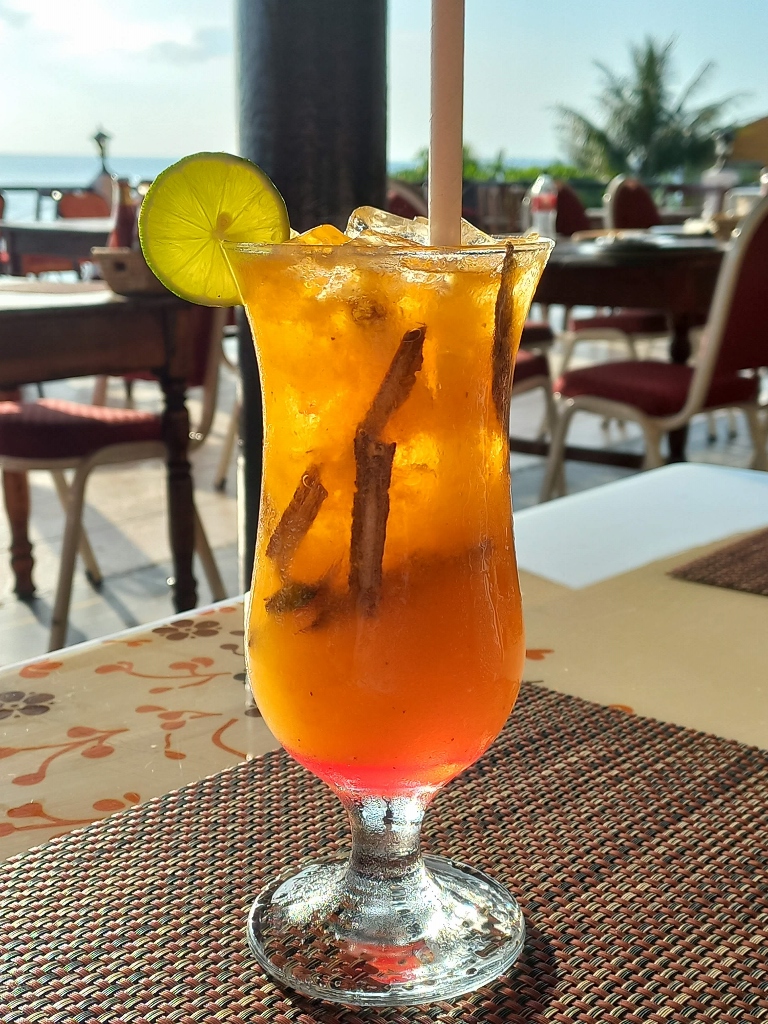 Cocktail in Stone Town
Cocktail in Stone Town
It had been agreed that we should all together go as a group for a dinner later that evening. Although I do not like late dinners and I’m quite independent, in other words I don’t necessarily need to be a part of a group, I also did not want to be too much of a “loner” either, so I joined gladly.
Before getting to a restaurant close to the Forodhani Park, we walked a little around this park that turns in the evening into a food fair with lots of stalls that often prepare food on the spot. The park is also a popular place for gathering throughout the day, not only of the visitors, but also of the local population. There are also benches under the trees, as well as a children’s playground.
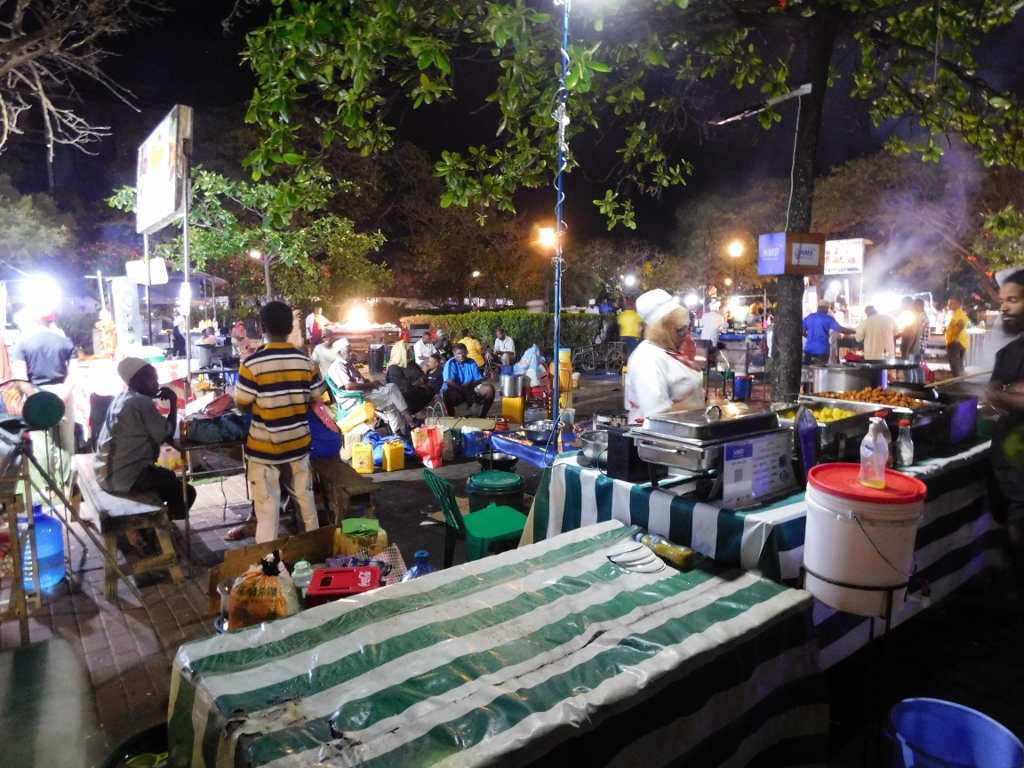 Forodhani Gardens in the evening
Forodhani Gardens in the evening
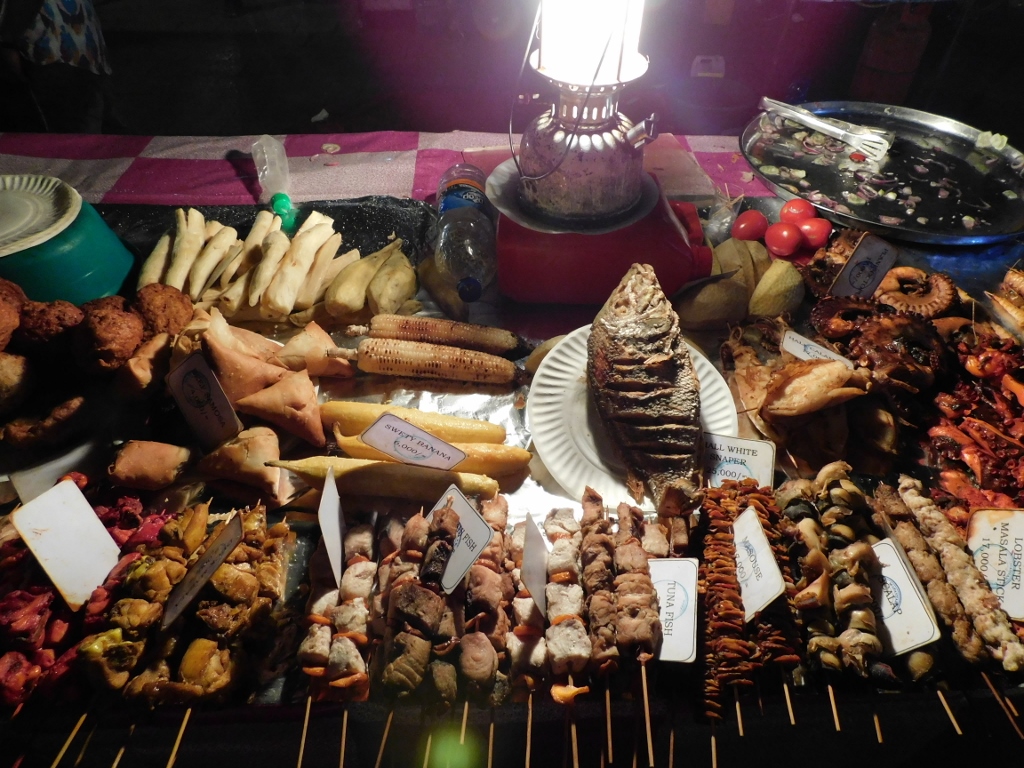 Forodhani Gardens in the evening
Forodhani Gardens in the evening
Lela and I agreed to come here to eat the following night, but for the time being we went with the group to a fish restaurant that was recommended to us. The food was quite fine and the beer was – local and cold! Just as it should be.
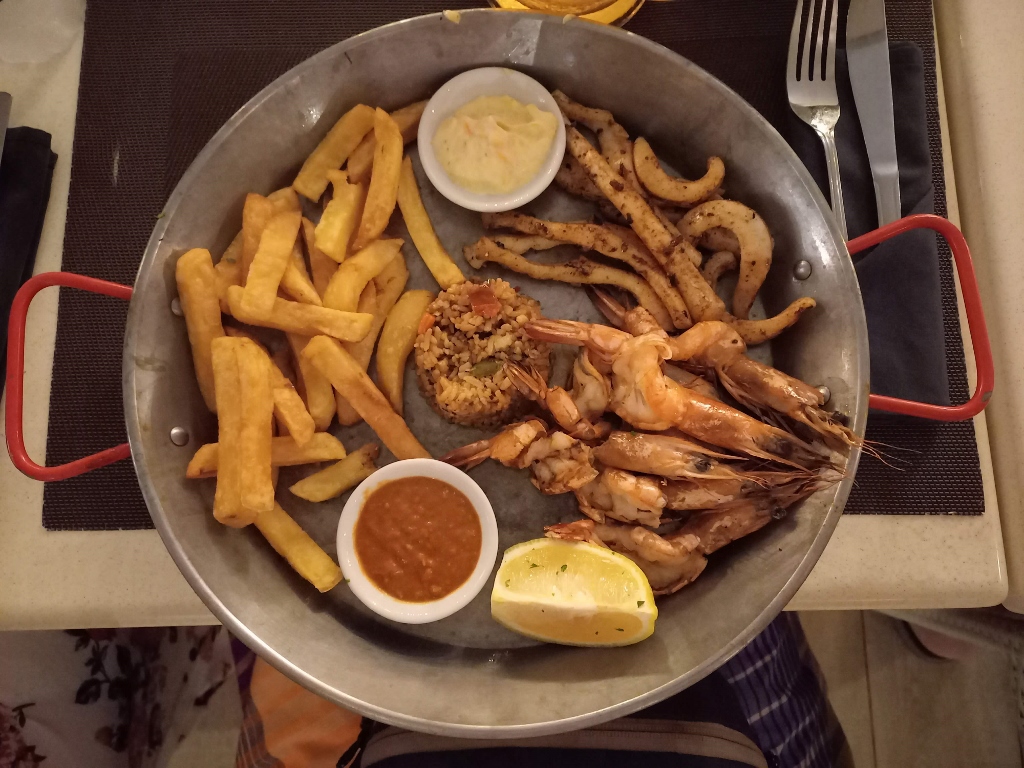 Dinner in Stone Town
Dinner in Stone Town
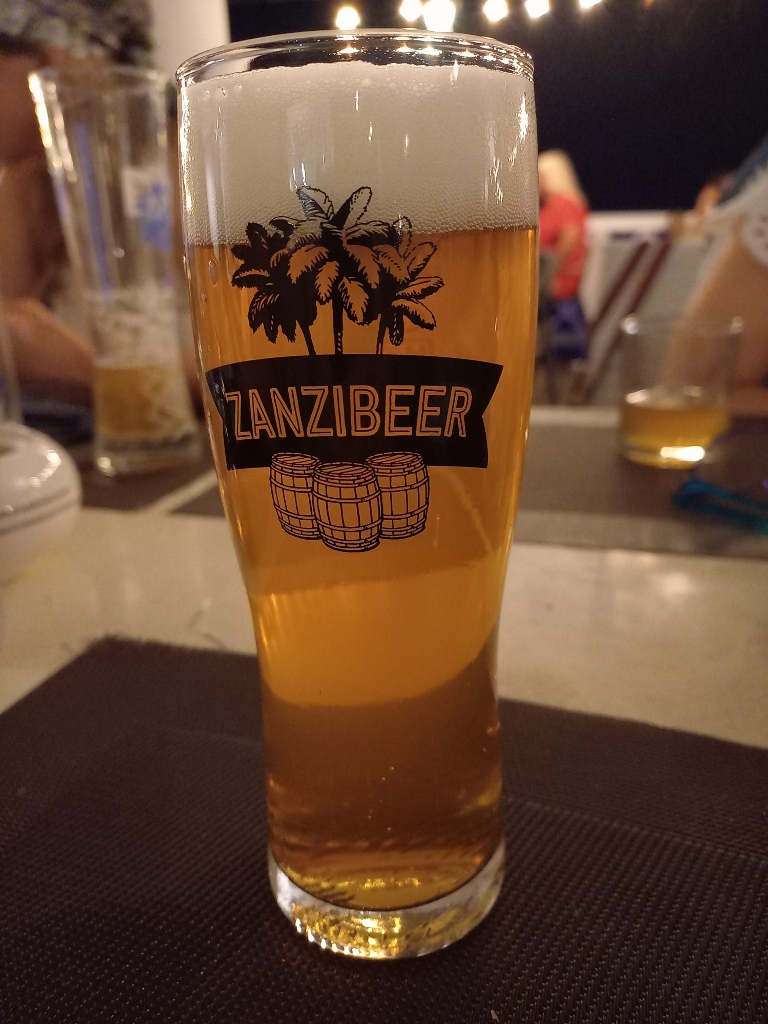 Beer in Stone Town
Beer in Stone Town
Regardless of the slow rhythm of the day, I did like it when I returned to the hotel room and when I went to bed. The time difference between Serbia and Zanzibar is only two hours, so I did not have any sleep issues caused by a jetlag, so I fell asleep at once.
After the good night’s sleep, I went to have breakfast that was in my hotel served at a terrace right by the beach.
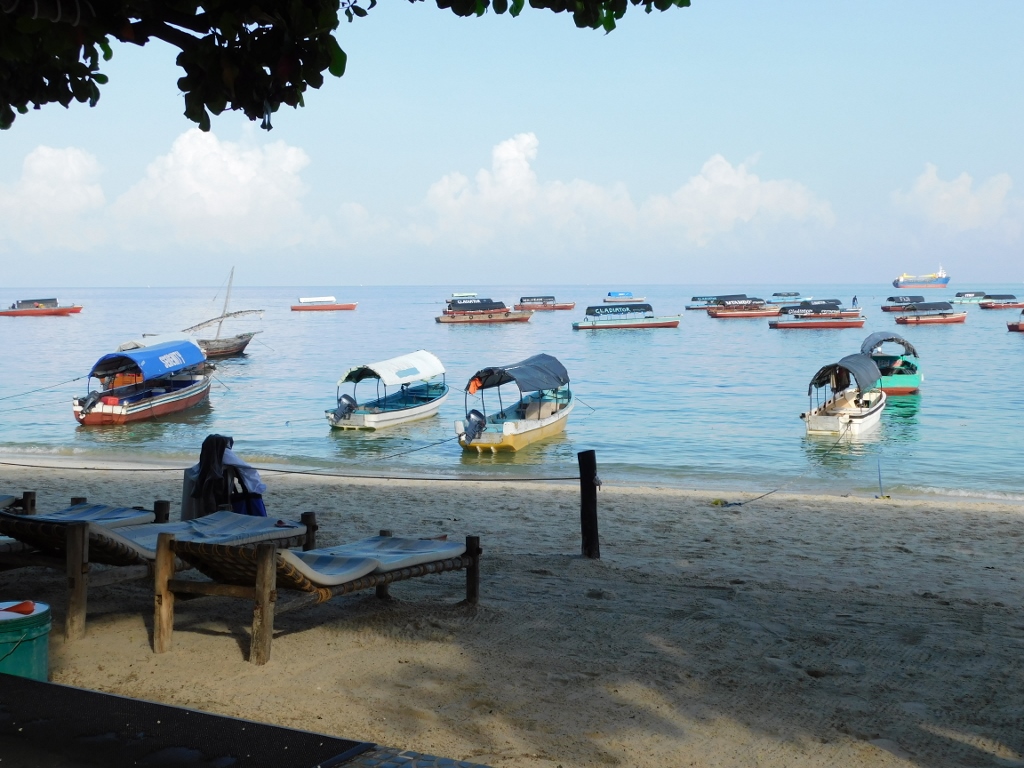 View during the breakfast
View during the breakfast
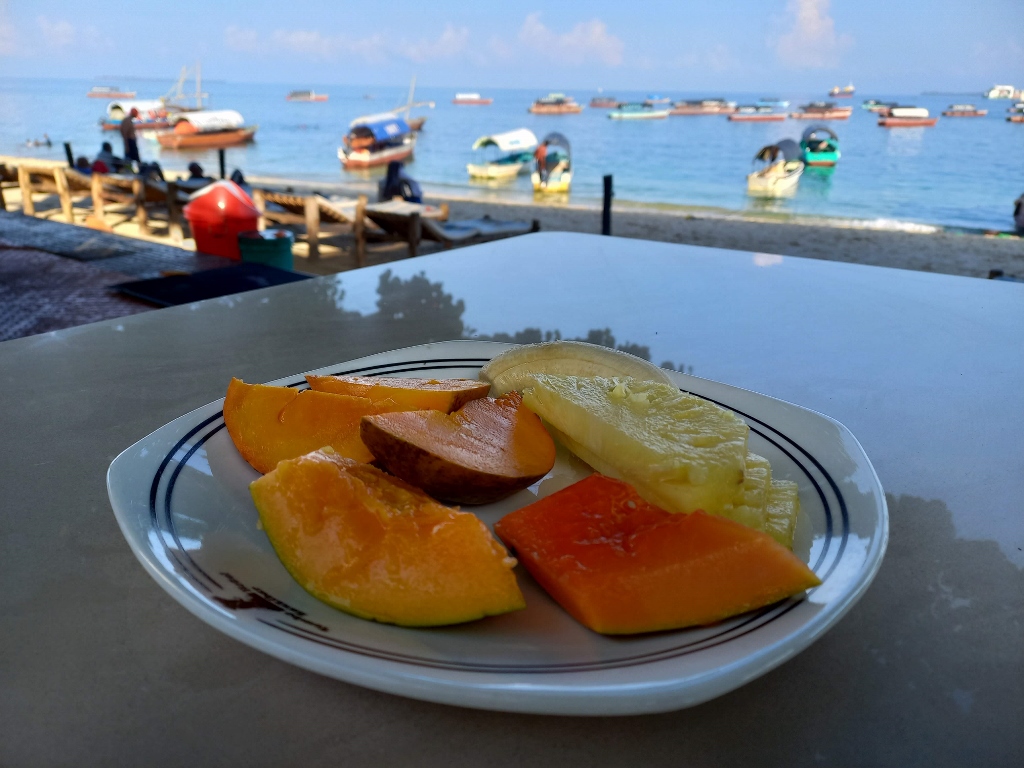 Part of the breakfast in Stone Town
Part of the breakfast in Stone Town
When I wanted to take a photo of the fruit plate using my photo camera, I got a completely blurred picture. The reason was that the camera’s lens was fully fogged. This happened because the camera spent the entire night in an air-conditioned room and now the well cooled camera had to operate in high air humidity. All that humidity from the air condensed in contact with the lens and turned into a “fog,” so I took the photo of the fruit plate using my mobile phone that balanced out its temperature faster and got adjusted to the exterior conditions.
The climate in Zanzibar is tropical, meaning that it is hot throughout the year (the average annual maximum temperature is 31 degrees C), while the meteorological fluctuations are linked to rains. The average annual air humidity is as much as 78%. There are two rainy periods on the archipelago – one is called the “long rains” season and it lasts from March to May. The other is the “short rains” season and it lasts from the middle of October to the middle of December. I was here at the beginning of December and it practically rained only during one day and that was in the shape of short showers. This only rainy day was precisely the one that started with a nice breakfast by the Indian Ocean.